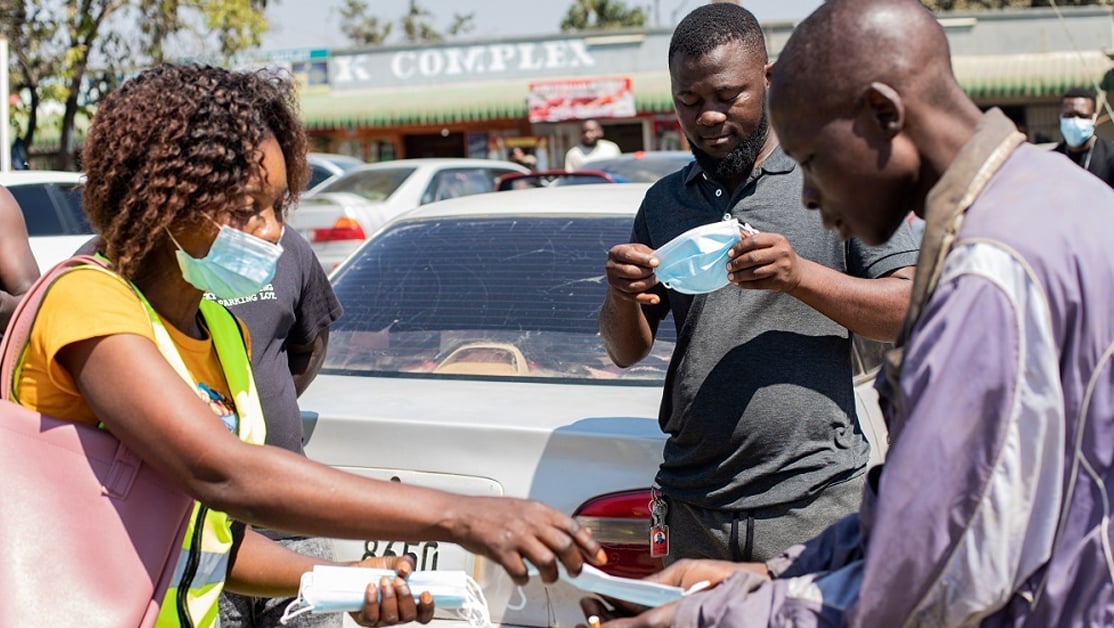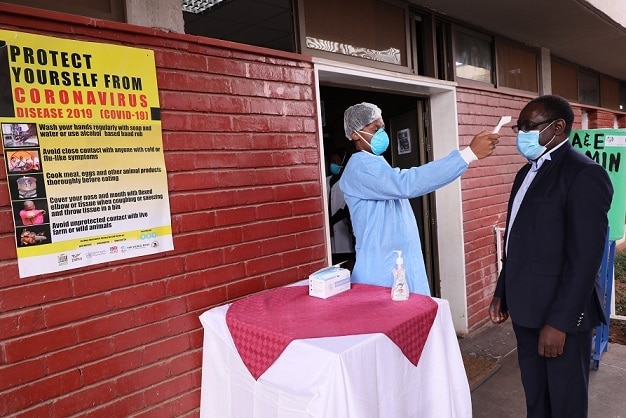At a glance
In this story, learn how the Zambia Ministry of Health, the President’s Emergency Plan for AIDS Relief (PEPFAR), and the U.S. Centers for Disease Control and Prevention (CDC) joined forces to accelerate COVID-19 vaccination uptake and achieve vaccination targets by leveraging existing HIV treatment centers.

The impact of collaboration

Zambia Ministry of Health, with support from PEPFAR and CDC, integrated COVID-19 vaccination into HIV treatment centers to accelerate vaccine delivery. Within ten months, 70 percent of the eligible population received their COVID-19 vaccination – achieving the African Union Targets. This effort demonstrated that HIV programs could be leveraged to increase COVID-19 vaccine coverage.
Challenges with coverage
COVID-19 vaccinations were first introduced in Zambia in April 2021, and coverage remained low. In December 2021, only 8.4 percent of the eligible population had received a COVID-19 vaccination.
The scale-up of COVID-19 vaccination efforts across Africa faced challenges, including lower-than-forecasted vaccine donations, under-resourced health systems, difficulties reaching those unaccustomed to adult immunization programs, and vaccine misinformation. As a result, COVID-19 vaccine coverage remained low, with only 17 percent of people living in Africa fully vaccinated by May 2022.
Turning the tide in Zambia

As vaccine supply increased, the government of Zambia, in collaboration with key partners, including PEPFAR and CDC, leveraged the national HIV program to enhance the COVID-19 vaccine campaign. Strategies included:
- Offering vaccine services to patients and their family members.
- Training current health staff on how to offer vaccines.
- Encouraging staff to get vaccinated.
- Developing educational materials for people living with HIV.
Integrating COVID-19 vaccination into existing HIV programs rapidly increased coverage. Similar interventions were soon adapted and implemented across the country.
On World AIDS Day, Zambia launched a campaign focused on the engagement of civil society leaders to endorse vaccination and began to offer vaccines in public places and through existing community health services. The impact was almost immediate, with daily vaccinations increasing from 3,713 per day before the campaign launch to 17,783 per day.
The Government of Zambia, and partners, including CDC as part of the interagency health team, should be congratulated for this extraordinary achievement.
The Zambian government and partners have demonstrated that investments from PEPFAR in HIV services, civil society, and health systems can be leveraged to support response efforts and benefit other health priorities, including global health security.
Striving for health security

During the COVID-19 pandemic, CDC advocated and implemented scientifically based COVID-19 vaccination efforts, prioritizing individuals at high risk for severe COVID-19 and increasing booster dose coverage in Zambia. The national campaign focused on highlighting the importance of community delivered vaccine services. By following Zambia’s successful service model, other countries were able to hasten vaccination coverage and help reduce the risk of new COVID-19 variants. By prioritizing health systems and security, a critical pillar of PEPFAR, CDC continues to help protect the health of individuals in the U.S. and beyond—ultimately saving lives.
CDC in Zambia
CDC established an office in Zambia in 2000 and works with various government ministries and provincial health offices to sustain a robust national HIV response.
CDC's areas of focus in partnership with Zambia include HIV prevention and treatment; integration of HIV and tuberculosis management; public health workforce capacity strengthening; and broader health systems strengthening, including disease surveillance, laboratory, and health information systems as well as the development of Zambia National Public Health Institute.
